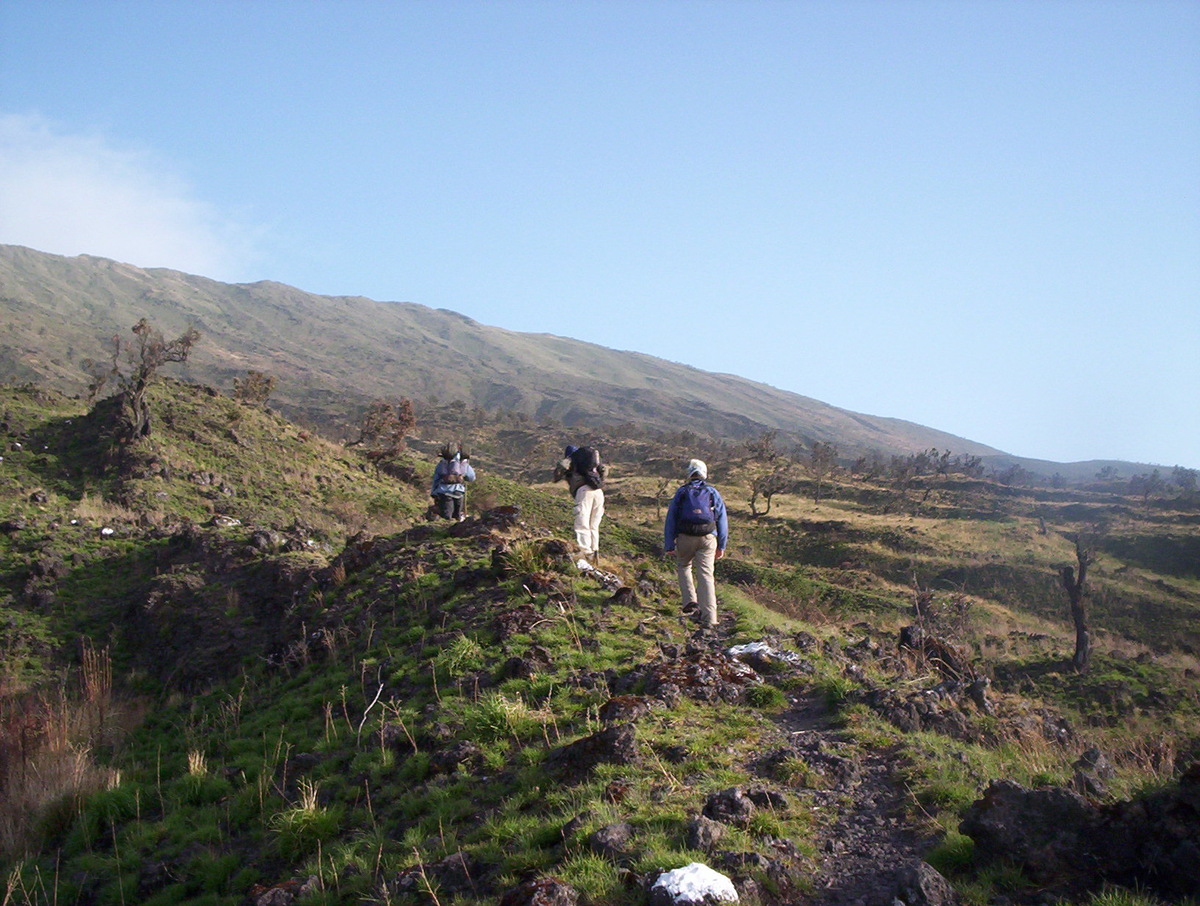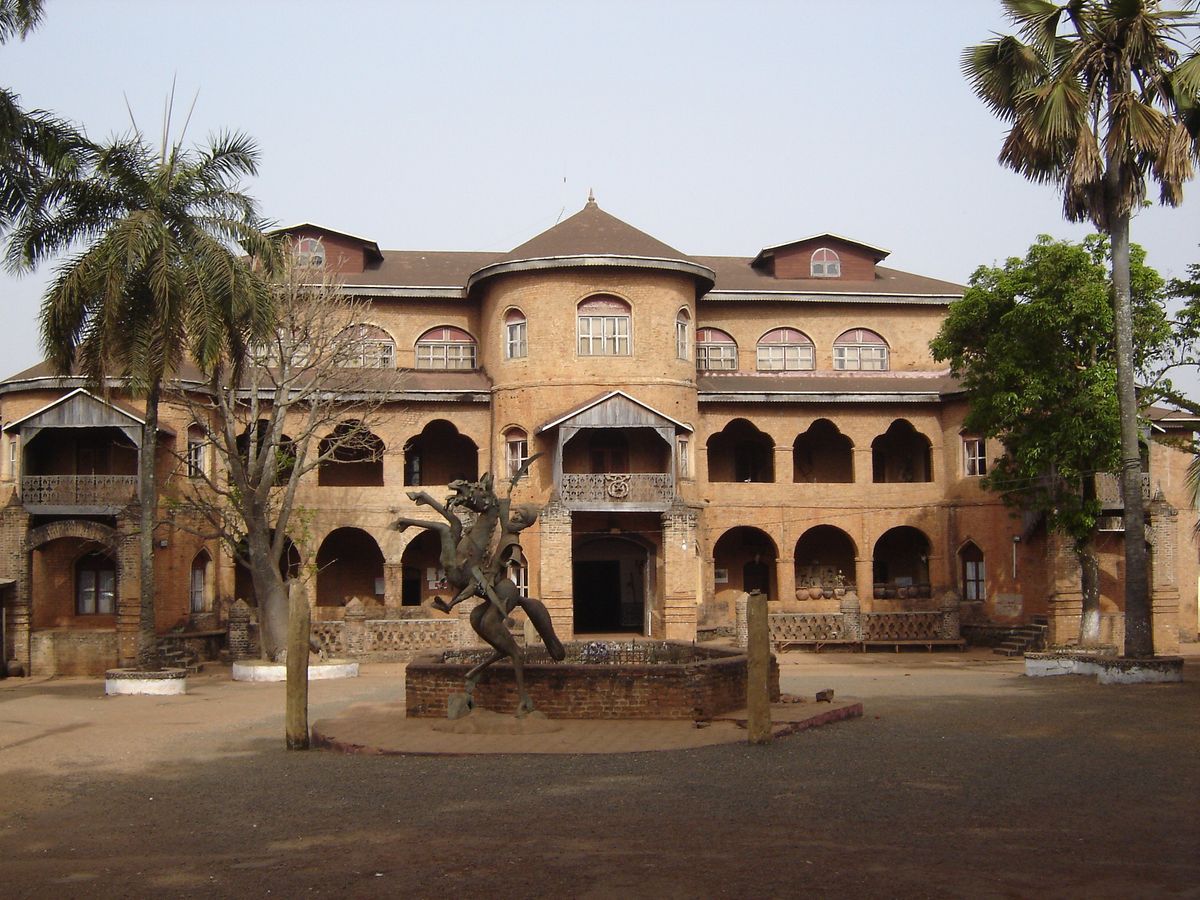Wondermondo 🢖 World 🢖 Wonders of Africa 🢖 Wonders of Cameroon
Territory
Wonders of Cameroon
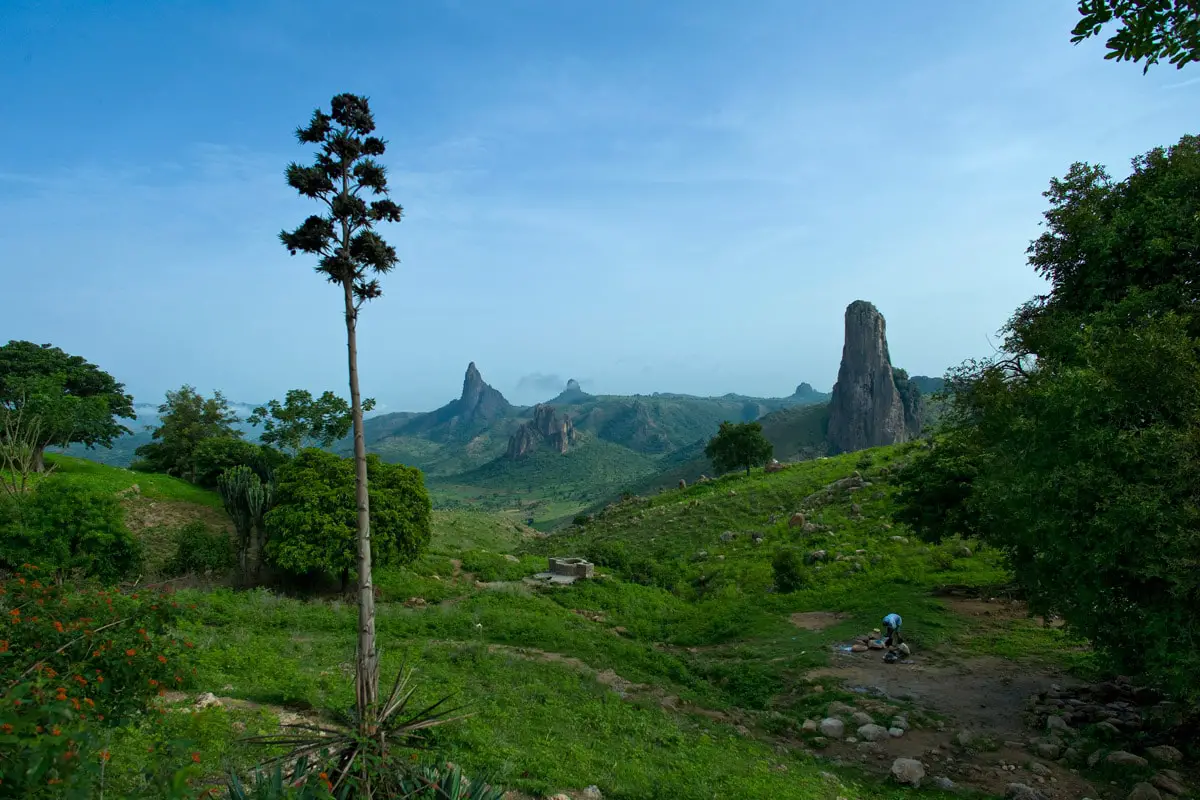
 Highlights
Highlights
The natural and man-made heritage of Cameroon is very rich and, most likely, there are additional outstanding landmarks that are not known to a wider audience and even specialists. This large country has huge landscape diversity ranging from sea and lowland rainforest to volcano summits and savanna. The most amazing wonders of Cameroon are:
- Indigenous architecture. Several ancient cultures evolved in Cameroon and traces of their impact are seen up to this day. Some styles of vernacular architecture in Cameroon are truly unique, such as Musgum architecture in the north of the country. Amazing landmarks are palace complexes of local chiefs (fons), especially the historical center of Bafut.
- Crater lakes. Lake Nyos and Lake Monoun got the dubious world fame of “lakes – killers” in the 1980s, when they exploded, emitting huge clouds of carbon dioxide. Other crater lakes may also have gas in their sediments but are unusual due to unique ecosystems – each of them has a whole collection of water animals that are not found anywhere else in the world.
Map with the described wonders
If you see this after your page is loaded completely, leafletJS files are missing.
 Top 25 wonders of Cameroon
Top 25 wonders of Cameroon
Geological wonders
Mount Cameroon
Southwest
Possibly the oldest still-active volcano in the world. It has been active for 30 million years at least. This enormous mountain rises 4 040 m from the ocean and is located over one of the largest known reservoirs of magma.
Nka’a Cave
West
168 m long cave with a river running through it. After the cave, there is a natural bridge over the river. The cave is used for ritual purposes and locals consider this a dangerous place at night.
Rhumsiki volcanic plugs
Far North
Mountainous area with amazing volcanic plugs – giant rock needles. This area with its traditional cultural landscape and roundhouses of Kapsiki people belongs to the most beautiful places in Africa.

Lake Nyos
Northwest
Crater lake with a pocket of magma that leaks carbon dioxide in the lake water from below. As a result, lake sediments become oversaturated with carbon dioxide. From time to time lake explodes, emitting huge amounts of carbon dioxide. The last eruption in 1986 killed 1,700 people.
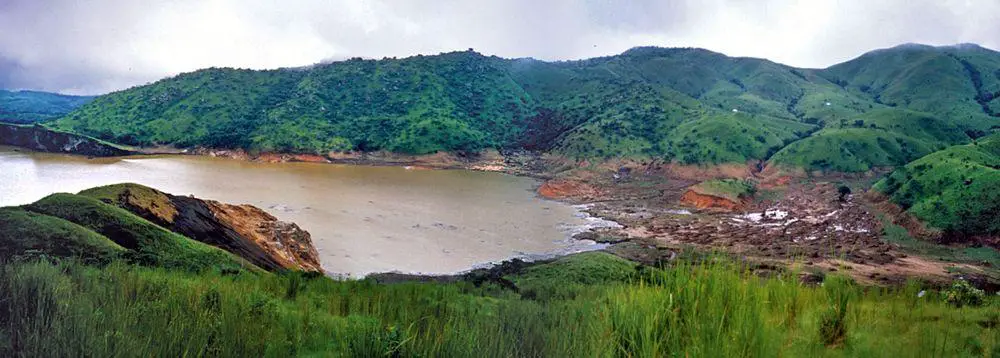
Lobé Falls
South (Cameroon)
A large waterfall that falls directly into the sea. The total height of falls exceeds 20 m (tallest step – 15 m) and width – 100 m. A sacred site to local people.
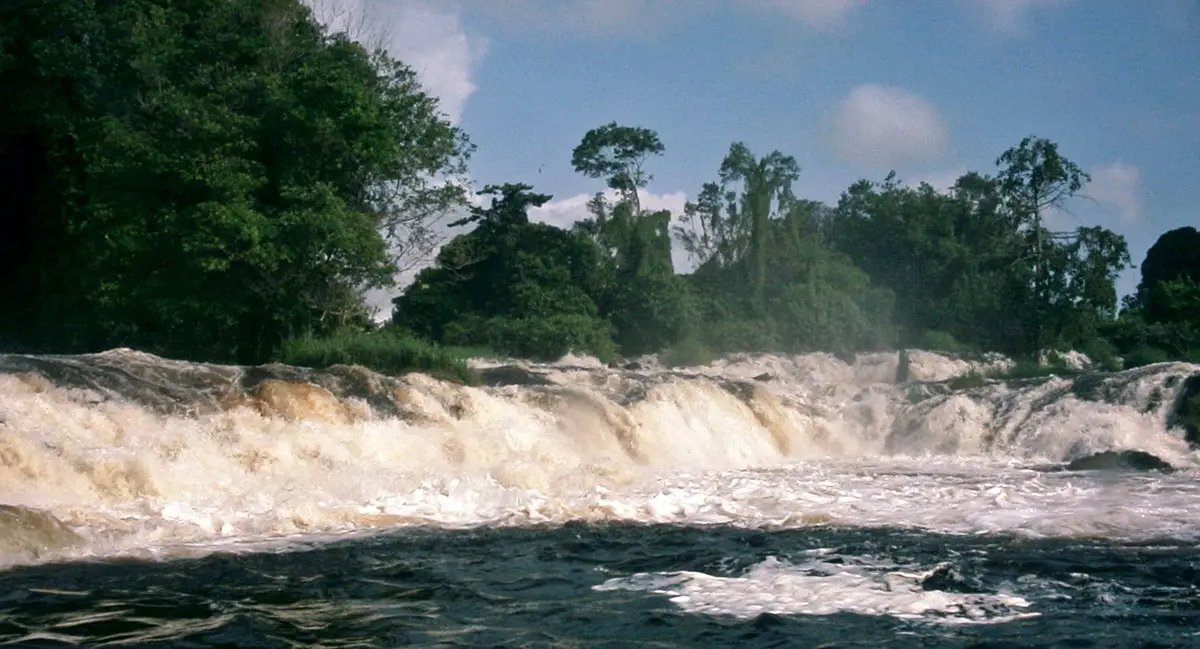
Ekom-Nkam Falls
Littoral, West
Spectacular, approximately 50 m (some sources mention 80 m) tall plunge of Nkam River. Beautiful scenery adds to the beauty of the falls.
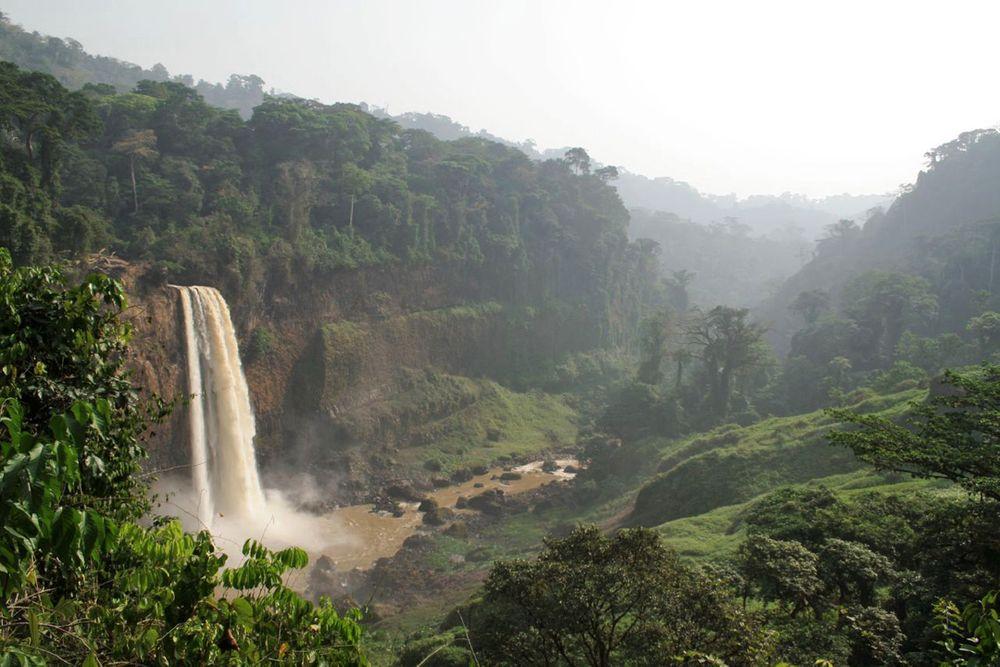
Kola Gorges
North (Cameroon)
Narrow and impressive, some 4 km long gorge. The depth of the gorge is 30 – 35 m, it ends with a 20 m tall waterfall and cave.
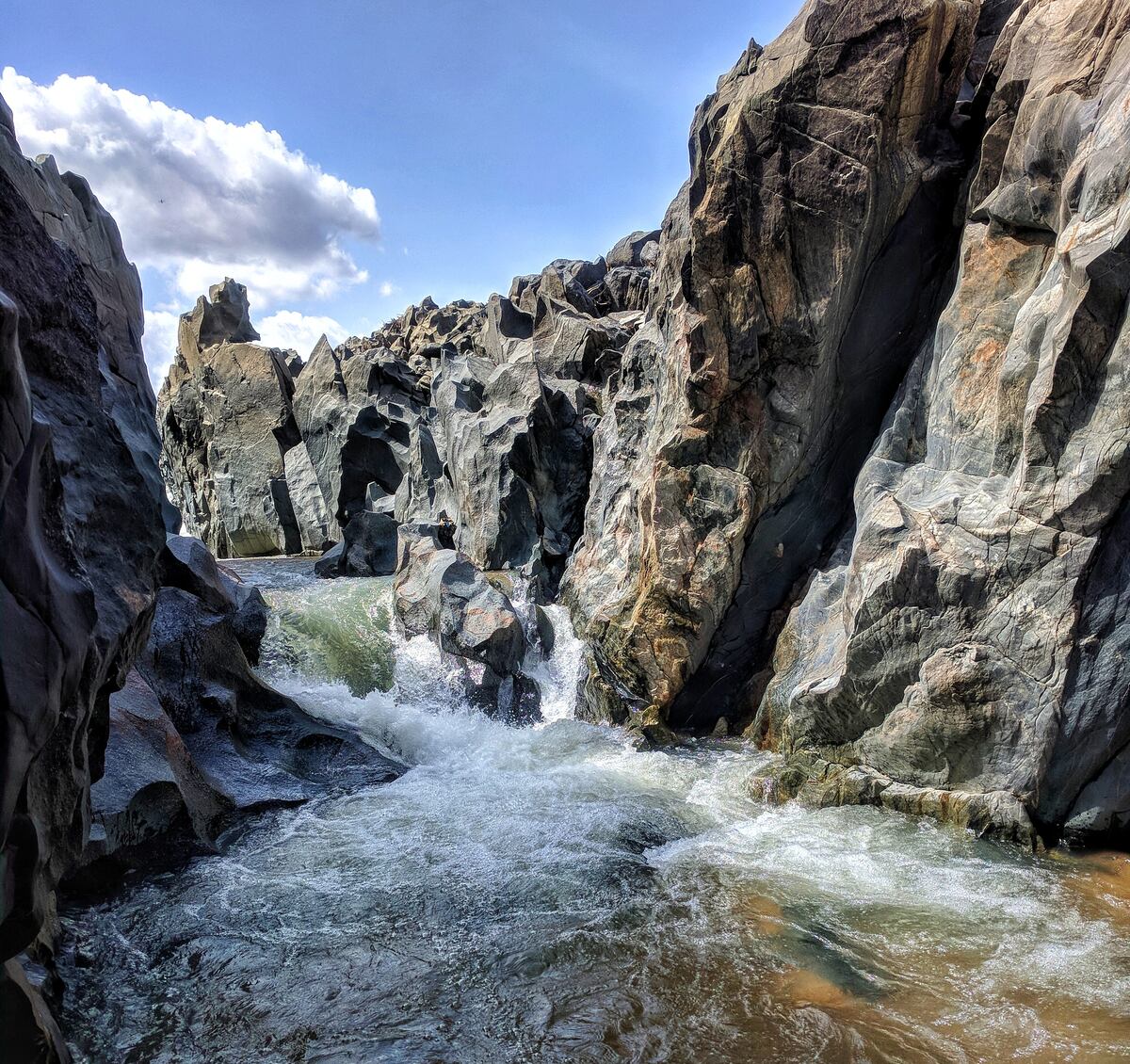
Métché Falls
West
40 m tall, rather wide plunge over cliff overhang. A sacred site to local people that, reportedly, was used to get rid of curses.
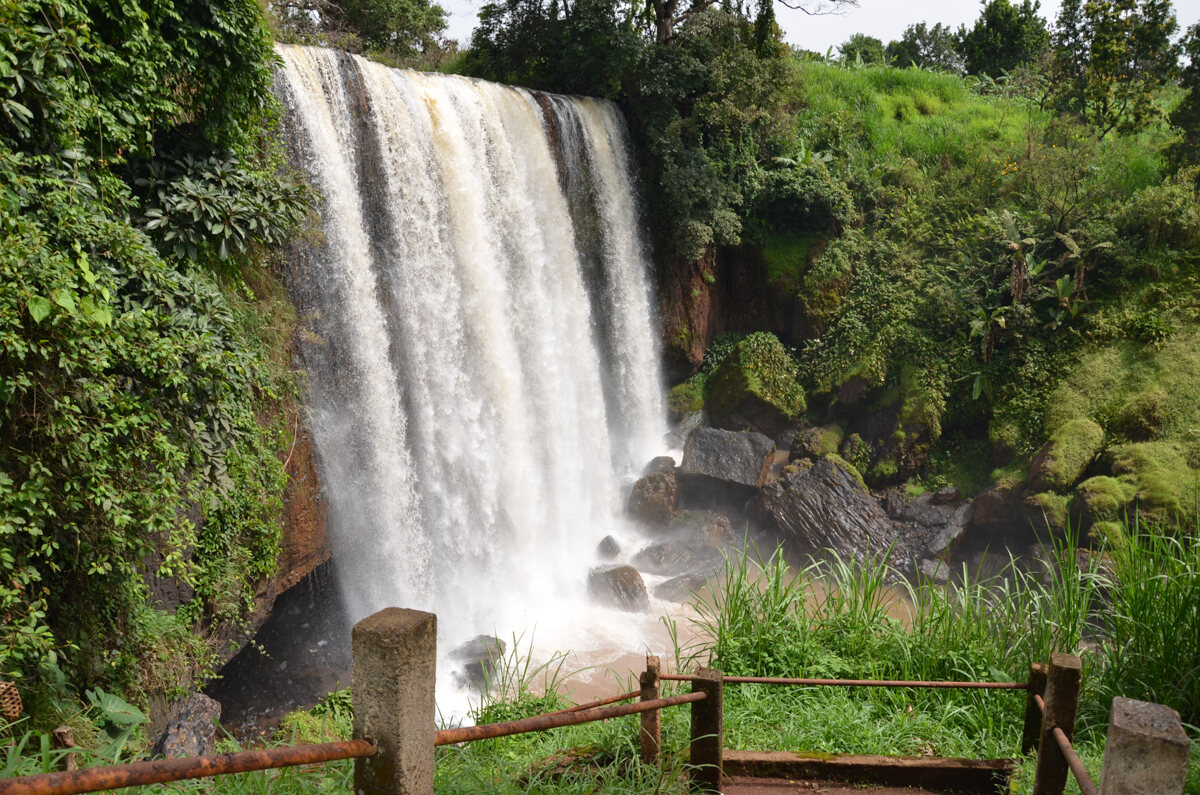
Menchum Falls
Northwest
Approximately 30 m tall waterfall of the powerful Menchum River. There are more rapids and waterfalls on this river.
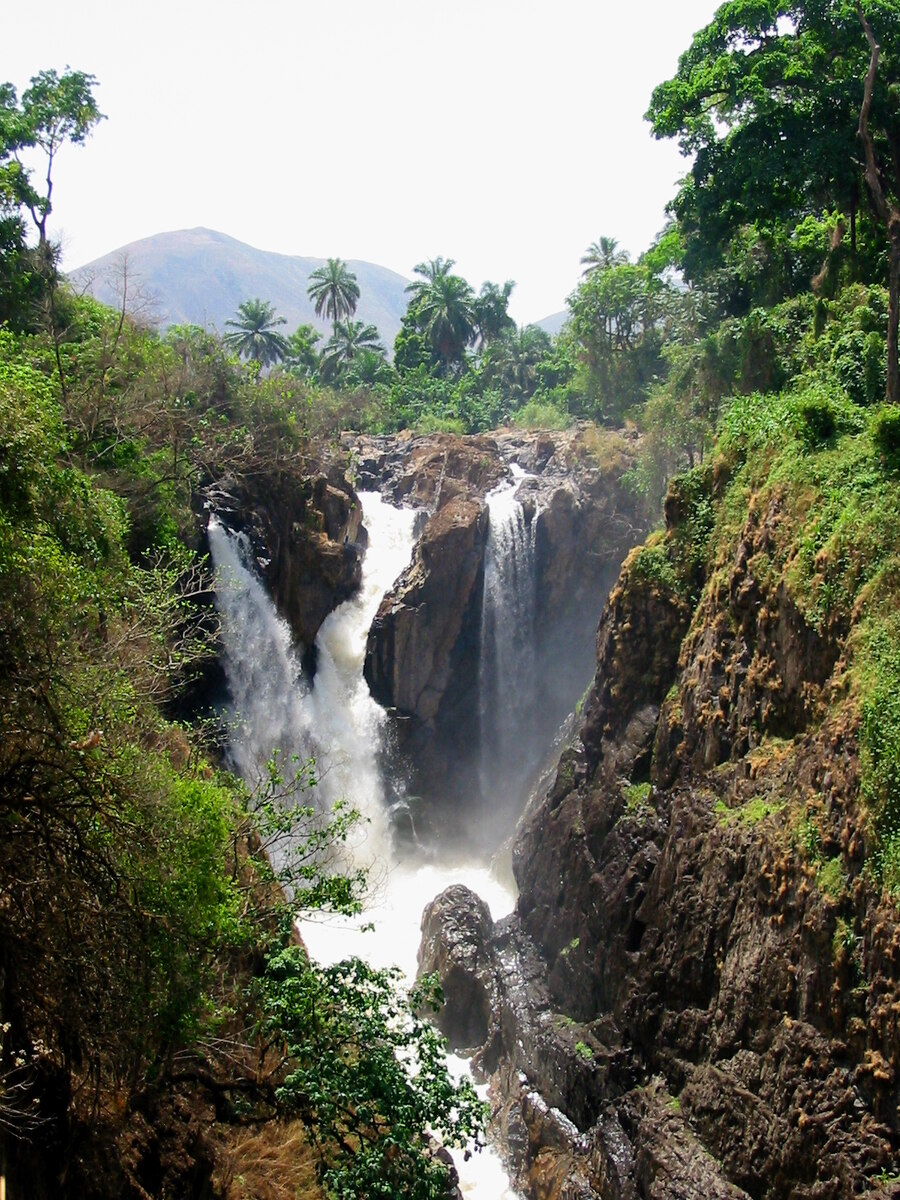
Lake Monoun
West
So-called exploding lake that can emit a huge amount of carbon dioxide thus killing the people and animals around the lake. The last eruption in 1984 killed 37 people.
Anloua swamps
Adamawa
Unique lake deposits where the largest vivianite crystals have been found. The largest crystals were up to 1.35 m long, now are found up to 40 cm long, green, and translucent crystals. The formation of such large crystals in lake deposits is unique.
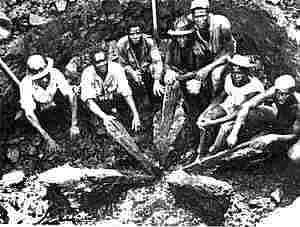
Biological wonders
Lake Barombi Mbo
Southwest
5 – 7 km² large volcanic lake with a large number of endemic freshwater species. 11 species of cichlids, catfish Clarias mclareni, sponge Corvospongilla thysi and shrimp (Caridina sp.) are found only here. Lake deposits contain much carbon dioxide, like many other local volcanic lakes.
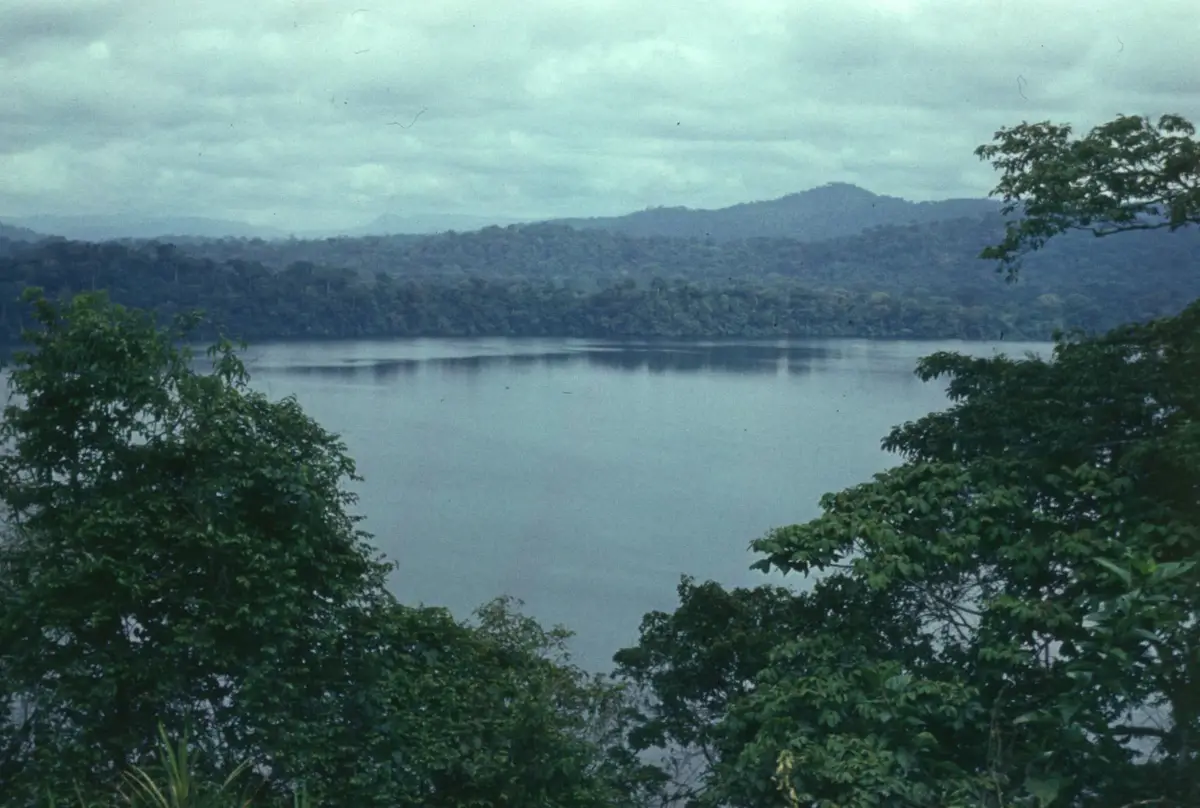
Lake Bermin
Southwest
Although this crater lake is only 0.583 km² large, 9 species of cichlid fish are endemic, found only here. Not far is another crater lake – Lake Dissoni – that has only three species of fish – but all these species are found only here.
Mount Oku swamp
Northwest
The highest sphagnum swamp in West Africa. It is located at a height of 2,900 m. The swamp contains unique species of plants and is surrounded by a pristine cloud forest.
Lake Ejagham
Southwest
Small lake, formed by groundwater and surrounded by tropical forest. Although this lake is only 1000 by 700 m large, there evolved 7 endemic species of fish.
Archaeological wonders
Shum Laka shelter
North West
An enormous rock shelter – space under a rock overhang. People have lived in this site over the last 32 thousand years and deposits contain numerous artifacts, including burials. This place is sacred to local people.
Diy-Gid-Biy
Far North
An abandoned settlement or sacred site that was abandoned sometime around the 15th century AD. Consists of a group of dry stone walls that rise up to 6 m tall. The site contains also tunnels that are overlaid with massive stones. In this region are found 15 similar sites.
Saa-Mbura and Saa-Machub megaliths
Littoral
Two large groups of megalithic structures – standing stones arranged in circles, squares, and alignments. The time of construction is not known.
Fovu Caves (Baham Cave)
West
Rock shelters under giant blocks of granite. The largest cave room is 40 m long, 20 m wide, and 15 m high. A sacred site.
Bidzar petroglyphs
Far North
Some 500 petroglyphs that are etched on a marble surface, mostly geometric symbols: circles, and cupules.
Architecture wonders
Bafut
Northwest
Center of Bafut Chiefdom with a shrine, palace, houses for secret societies, lodges, and women’s houses. Houses are built from mud brick, roofs are tiled with terracotta. In the center of this town is located Achum Shrine (Bagangu), rebuilt in the 1910s in traditional style, with interesting, distinct ornamentation. Another important building is Bafut Palace where lives ruler – Fon of Bafut. Only he and his wives can enter Achum Shrine. Palace was built more than 400 years ago, the current palace was rebuilt in the early 20th century.
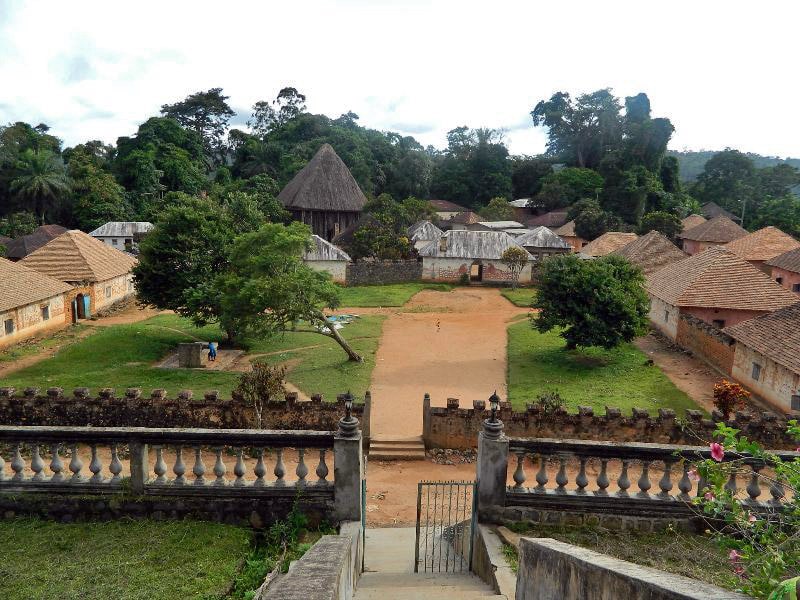
Musgum mud huts in Pouss
Far North
In this remote area of Cameroon has evolved a unique style of construction – unusual, beehive-formed buildings with ornamentation and bright colors. The small settlement of Pouss is rich with these buildings, and interesting is also Sultan’s Palace.
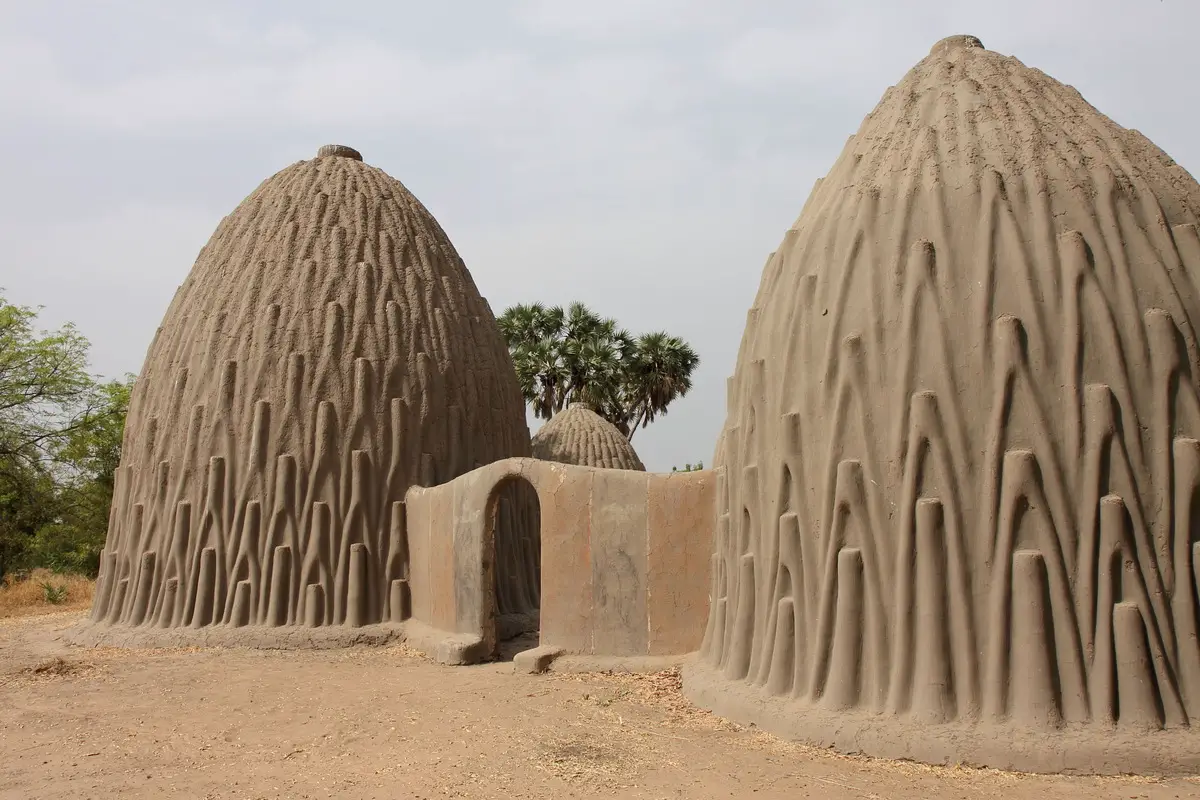
Foumban Royal Palace
West
The administrative center of the Bamoun people, a large palace that was constructed in 1917. Today it contains the Sultan’s museum and a rich collection of traditional weapons. Foumban is a center of culture, where indigenous writing (Shumom or Bamum script) was invented and used.
Rey Bouba Palace
North (Cameroon)
Center of power for Rey Bouba sultanate – a large complex of buildings over an area of 5 ha. The core part of the complex is surrounded by 800 m long and up to 7 m tall walls with 6 doors. Complex was constructed in 1805 – 1808.
Palace of King’s Bell
Littoral
Palace of the King Auguste Manga Ndumbe, constructed in 1905 in Eclectic style.
 Recommended books
Recommended books
Cameroon (Bradt Travel Guide)
With ancient chiefdoms tucked between terraced fields and volcanic mountains, Mount Cameroon―Africa’s highest peak, the impressive Waza National Park with its herds of elephants, and the coast’s sleepy palm-fringed beaches, Cameroon has no shortage of attractions, yet it somehow fails to be a tourist haunt. The only full-length, English-language guide, this book contains essential information on nature, culture, and staying healthy plus practical details like getting around and accommodation options in the city and countryside.
You Went Where?: An Unexpected Journey to Cameroon
This is a story of love and family that involved a three-month visit to Cameroon, a country that most Americans have a hard time finding on a map. Relatively few visitors find their way here since most tours focus on the plains of East Africa. Cameroon is located on the Gulf of Biafra just under the great bulge of West Africa. It is roughly knife-shaped and plunges deep into the heart of central Africa. It contains within its border almost every animal and habitat that can be found anywhere on the continent.

